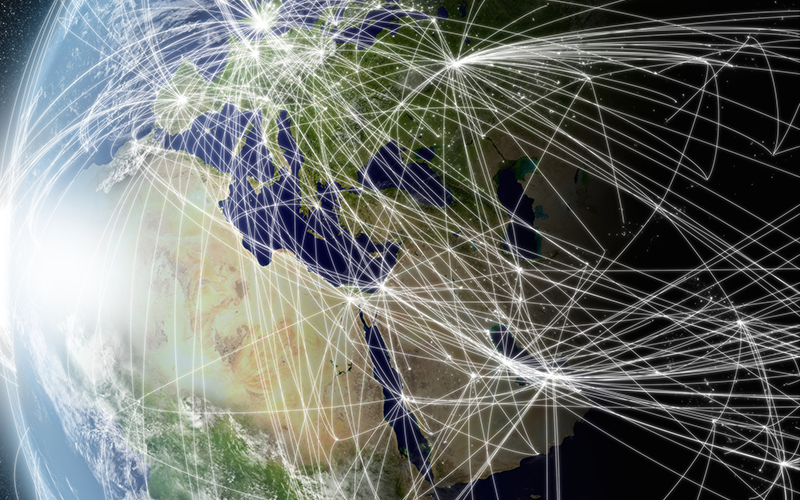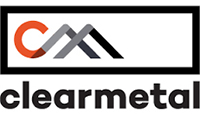Creating a Synchronized Global Trade Supply Chain

In an increasingly interconnected world, where trade is a core component of economic activity, creating a more seamless global supply chain is now vital, however, a new generation of tech-savvy freight forwarders may be creating just the right amount of disruption the industry needs to improve synchronization.
A wide range of free-trade agreements (FTAs) has facilitated trade with the United States in the recent past, and that trend is expected to gain momentum if the Trans-Pacific Partnership (TPP) is finally ratified and if other deals - such as the Transatlantic Trade and Investment Partnership (TTIP) - come to fruition.
However, researchers for the Economist Intelligence Unit (EIU) note in a recent report that logistics managers face a slew of additional complications that will require today’s freight forwarders to come up with new and innovative solutions.
According to EIU analysts, most multinationals are optimistic about future trade activity with the United States.
Indeed, the United States accounts for 13% of global imports and 9% of global exports and will continue to remain a key market for companies in Europe and Asia.
In fact, two-thirds of respondents in the EIU survey anticipate that their company’s trade with the United States will increase over the next five years, with over 43% expecting an increase of 10% or more.
This means that freight forwarders will have yet even more pressure to perform in the future, add analysts.
“Companies face a number of issues in trading with the United States, but none of these are perceived to be insurmountable,” says Andrew Siciliano, practice leader for trade and customs at advisory firm KPMG, U.S.
“Exchange-rate volatility presents the largest issue for companies, with 41% of respondents citing this as a concern.”
Siciliano also observes that close to one-third of EIU survey respondents cite transport costs and delays, trade-related infrastructure, and making payments as their top challenges.
Other challenges cited by close to 30% of respondents are access to trade finance, unfair competition, communication challenges and cultural hurdles.
“However, many of these are challenges that companies experience in other markets as well,” adds Siciliano, “and the overarching consensus is that these challenges are not viewed as deal-breakers when it comes to trading with the U.S., given the sheer size of the market opportunities there.”
Embracing Complexity
In the meantime, freight forwarders will be expected to help shippers identify and navigate premium trade lanes as well, says Cathy Morrow Roberson, president of research firm Logistics Trends and Insights.
“The main takeaway from recent studies and surveys is that forwarders must add much more value to their services by mapping out a sustainable distribution strategy even when the transport infrastructure is less than entirely reliable,” says Roberson.
This observation echoes those made by EIU researchers who maintain that the overall quality of trade-related infrastructure in the U.S. is highly rated, with 69% of respondents stating that the current overall quality of trade-related infrastructure in the U.S. is either “very good” or “excellent.”
Deeper investigation, however, points to shortcomings with ports and land borders that freight forwarders will have to confront. For example, infrastructure development has not kept pace with the increase in trade activity and requires significant investment for expansion and automation.
Along the border with Mexico, there are severe infrastructure bottlenecks. This has been partially alleviated through the expansion of the Tijuana-San Diego crossing, but additional investment is needed.
“According to our research, customs procedures and rules, in particular the Merchant Marine Act of 1920, are complex and add to the costs facing foreign companies,” says Duncan Wood, director of the Mexico Institute at the Washington, D.C.-based think tank Wilson Center.
“Stringent safety standards, such as seat-belt standards for trucks, have resulted in some experiencing delays at the Mexican border.”
The EIU survey notes that the top sources of regulatory challenges for freight forwarders include customs duties and valuation (26%), licensing requirements (23%) and product-quality standards (20%). “Initiatives such as the Automated Commercial Environment (ACE) system and Base Erosion and Profit Shifting (BEPS) will go some way towards easing the burden,” says Wood.
Paradigm Shift
Other analysts note that the post-9/11 security paradigm shift has increased the administrative requirements faced by foreign companies and freight forwarders.
Under the Customs-Trade Partnership Against Terrorism (C-TPAT) program, the focus at Customs has shifted from expediting the clearance of good-quality and safe items to preventing high-risk products from entering through the use of new screening and tracking technology. Firms exporting from the United States are also restricted in shipping options unless they are certified.
“Trade-related regulatory challenges impose significant additional costs on foreign companies,” says Sean Doherty, head of international trade and investment at the Geneva-based World Economic Forum.
He observes that over 40% of EIU survey respondents indicate that trade-related regulatory challenges increase the cost of doing business by 10% to 30%, with an additional 15% reporting an increase of more than 30%. In a competitive market like the U.S., companies are highly sensitive to these challenges, particularly issues with customs regulation.
Furthermore, adds Doherty, payment-related challenges arise from a range of issues, particularly process inefficiencies (52%) and limited payment visibility (52%).
“Limited international exposure of many U.S. firms means that critical information, such as the international bank account code, is not readily available, making money transfers and securing credit insurance particularly challenging for foreign companies,” says Deborah Elms, executive director, Asian Trade Center in Singapore.
Elms adds that for firms in Asia-Pacific, incompatibility of payment systems means that more expensive alternatives, such as bank transfers and wire transfers that incur hefty fees, have to be used.
“The EIU survey reveals that challenges with payments impact these companies mainly through increased foreign exchange rate exposure, increased costs, and limited flexibility to respond to emergency payments,” says Elms.
As a consequence, foreign companies look to key developments in policy and politics to understand the outlook for trading with the United States, closely tracking the rhetoric on the campaign trail for the 2016 U.S. presidential election, maintains Iain Douglas, who authored the EIU report.
“The negotiation of new trade deals, the Trans-Pacific Partnership (TPP) in particular, will bring new opportunities for shippers and their freight intermediaries,” says Douglas.
“Survey findings strongly corroborate this sentiment: 49% of respondents expect the TPP to improve opportunities for trade with the U.S. market moderately, while an additional 29% believe it will improve opportunities substantially.”
New Forwarders Meeting Challenge
Meanwhile, the supply-chain consultancy Armstrong & Associates estimates that global freight-forwarding market has grown at an average rate of about 12.3% a year since the 1990s.
It amounted to about $238 billion in revenue in 2015, but that surge has slackened by almost 5% in recent years, coinciding with a slowdown in China’s economic expansion.
“Given this reality, the economies of scale still favor the mega forwarders,” says Evan Armstrong, the firm’s president.
“They have the economies of scale to leverage ocean and air cargo rates that smaller players simply don’t have.”
But forwarding upstarts like San Francisco-based Flexport takes issue with this, noting that technological breakthroughs are rapidly changing the landscape.
According to Ryan Petersen, the startup’s founder and chief executive, shippers have been paying too much for simple services that can done with a lean and responsive staff schooled in the nuances of digital commerce.
“Because no company is big enough to have all the assets required - trucks, container ships, cargo planes, trains, warehouses, and more, in every country on earth - freight forwarders have to use multiple asset owners on any given shipment,” he says.
“That’s what we [Flexport] do.”
Andrew Lubin, who currently teaches a variety of logistics management and international business courses at Rosemont College, agrees, contending that small and nimble companies like Flexport “are the new wave” of the forwarding future.
“While the giant forwarders continue to buy and resell container space at a huge profit, new business models are competing by building global databases,” says Lubin.
“By doing this, they reduce their overhead and save shippers money.”
Israel’s Freightos is another rising star, Lubin points out, noting that it too offers software that provides Customs clearance while booking ocean and air cargo seamlessly through the internet.
Dr. Zvi Schreiber, CEO of Freightos, maintains that the forwarding industry is moving on two parallel paths, with most major transport carriers continuing to work with the larger established players while striking up relationships with new companies like his.
“This is a delicate ecosystem for the time being,” he says, “comprising companies of all sizes and influence.”
Adam Compain, founding CEO of the “predictive logistics” forwarder ClearMetal in San Francisco, says that deep math and cloud technology are transforming the industry.
“In today’s world, a lot of forwarding inefficiencies can be addressed without costing the shipper any more money,” he says.
“The big ocean and air carriers are moving toward digitization, too. There’s not much more room for bankruptcies or more alliances in the global marketplace.”
Old Guard Response
While scores of venture capital upstarts threaten the forwarding status quo, the giant freight intermediaries are beginning to work with them while investing in their own technology.
Kuehne + Nagel, for example, recently launched KN FreightNet, a digital product providing instant quotation, online booking as well as track and trace for air and sea shipments. In the scope of its venture platform, the mega forwarder engages with startups and explores new business opportunities broadening its digital offering and customer base.
“Using our core competence and scaling-up our digital mind set, especially in the area of data management and analytics, we develop products designed to bring additional value,” says Dr. Detlef Trefzger, CEO of Kuehne + Nagel Group. “We consider digitalization not as disruption, but as part of our ongoing business evolution.”
Building on its market intelligence, Kuehne + Nagel created “global Kuehne + Nagel indicators” providing estimates for key economic figures, such as trade balance and industrial production, based on the forwarder’s insights into markets and data of global trade flows.
This digital revolution has not been without its mishaps, however. DHL’s freight forwarding division has been struggling for the past two years to recover from a failed IT modernization program - the costly and infamous “New Forwarding Environment” initiative that led to a shakeup in the company’s management structure.
Tim Scharwath, the newly named DHL Global Forwarding CEO, hopes to reverse that fortune. “What is clearly needed here is a unified global technology platform that can help deliver online quotation and booking,” he says. “Everyone is moving in that direction, and logistics managers will come to expect it from all forwarders - regardless of size.”
Related Article: Companies Worldwide are Optimistic about Future Trade Activity with the U.S.
Related White Papers
State of Online Freight Sales
While many business-to-business sales industries continue to expand sales online, the logistics industry has been slow to adopt online freight sales and booking, leaving ample space for ambitious forwarders to expand sales with new channels. Download Now!
What Shippers Want
A roadmap for online freight services: Following suit from other industries, forward thinkers in the industry are already adopting online freight quotes and sales as a key differentiator, gaining an important competitive advantage in a crowded market space. Download Now!
21st Century Carrier
New complexities must be understood and conquered to drive profitability and build the profile of a 21st century carrier, a technology-enabled, data-driven carrier that uses Predictive Intelligence to create true asset efficiency. Download Now!
View More: Related “Freight” White Papers
Article Topics
ClearMetal News & Resources
Maersk and Ericsson Team with Silicon Valley’s Plug And Play for Supply Chain & Logistics Program 21st Century Carrier Creating a Synchronized Global Trade Supply ChainLatest in Supply Chain
Amazon Logistics’ Growth Shakes Up Shipping Industry in 2023 Spotlight Startup: Cart.com Walmart and Swisslog Expand Partnership with New Texas Facility Nissan Channels Tesla With Its Latest Manufacturing Process Taking Stock of Today’s Robotics Market and What the Future Holds U.S. Manufacturing Gains Momentum After Another Strong Month Biden Gives Samsung $6.4 Billion For Texas Semiconductor Plants More Supply ChainAbout the Author






















